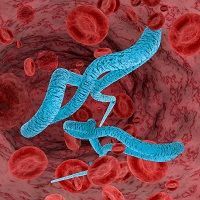Article
Ebola Survey: Safety-Net Facilities Low on Protective Gear
Author(s):
A significant portion of America's safety net hospitals have only a bare minimum supply of the personal protective equipment the government says is necessary for healthcare workers who treat Ebola patients.

A significant portion of America’s safety net hospitals have only a bare minimum supply of the personal protective equipment the government says is necessary for healthcare workers who treat Ebola patients.
Direct Relief, a non-governmental healthcare-focused nonprofit organization, conducted a survey of readiness at 3,000 nonprofit health facilities in all 50 states. The National Association of Community Health Centers and the National Association of Free and Charitable Clinics each made the survey available to their members.
Three-quarters of respondents said they have no surplus supply of waterproof shoe covers. Nearly two-thirds (62.8%) said they don’t have any surplus waterproof gowns. And more than half said they don’t have a surplus of face shields and N-95 face respirators.
The above equipment is recommended by the US Centers for Disease Control for use when treating Ebola patients.
Only 4 people have been diagnosed with Ebola in the US, and only 2 of those people contracted the virus on US soil. Three of the 4 were healthcare workers who apparently contracted the disease from patients they were caring for. Healthcare organizations and public health officials have been working hard to ensure their staffs are trained should a patient arrive with symptoms of the virus.
“Health centers are critical partners in the containment of communicable disease outbreaks,” said Ron Yee, MD, chief medical officer of the National Association of Community Health Centers, in a press release. “There is a lot of fear in the communities regarding the Ebola virus and we need to assure our patients that we will provide safe care while also protecting our health center staff.”
The good news is that 84.1% of respondents said the information they’ve received about the virus has been “useful” or “very useful.” Nearly 4 out of 5 (78.7%) found the Ebola guidance they were given to be helpful.
However, roughly one-third of respondents said they would like more information overall. The same amount said they need more equipment.
“Whether it’s a hurricane, an outbreak of influenza, or fear of Ebola, local health centers and clinics are turned to by their communities in times of emergency,” said Damon Taugher, director of US programs at Direct Relief. “Their role in managing Ebola in the US cannot be overlooked.”




